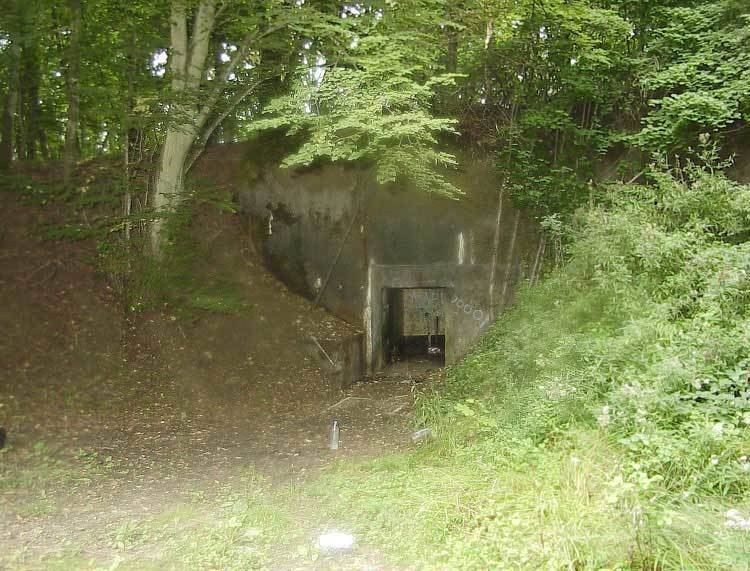Open tothe public No Built by CORF | Condition Abandoned, buried | |
 | ||
Materials Concrete, steel, deep excavation Similar Ouvrage Kobenbusch, Ouvrage Molvange, Ouvrage Métrich, Ouvrage Rochonvillers, Ouvrage Mont des Welches | ||
Ouvrage Soetrich is a gros ouvrage of the Maginot Line in northeastern France. Soetrich is located between petits ouvrages Immerhof and Bois Karre, facing the France-Luxembourg border near the town of Hettange-Grande, part of the Fortified Sector of Thionville. Compared with other gros ouvrages, Soetrich is compact in arrangement, with the entries and underground ammunition magazines and barracks in close proximity to the combat blocks, accessed through underground galleries at an average depth of 30 metres (98 ft). Its primary purpose was to cover the main road to Luxembourg, just to the west. Along with its neighbors, Ouvrage Rochonvillers and Ouvrage Molvange, Soetrich was used during the Cold War as a secure command center for NATO forces.
Contents
Design and construction
The Soetrich site was surveyed by CORF (Commission d'Organisation des Régions Fortifiées), the Maginot Line's design and construction agency, in 1930. Work by the contractor Degaine-Dubois began the same year, and the position became operational in 1935, at a cost of 86 million francs.
Soetrich stands just to the east of the Thionville-Luxembourg road. A military road and a 60 cm narrow-gauge railway link the entrance blocks to the rear supply areas. The railway continues through the ouvrage to the combat blocks. The combat and support areas are separated by only 125 meters (410 ft), and the total length of the main gallery is 625 meters (2,051 ft).
Description
The ouvrage comprises two entries and six closely grouped combat blocks:
Casemates, observation points and shelters
The Observatoire de la Route du Luxembourg is just to the west to the ouvrage, on the other side of the main road to Luxembourg. It was equipped with an observation cloche and a GFM cloche. Just to the south is the Abri de la Route du Luxembourg, which sheltered a section of infantry that supported the observatory and the flank of the ouvrage.
Several other casemates, observatories and infantry shelters are located around Soetrich, including
None of these are connected to the ouvrage or to each other. All were built by CORF. The Casernement de Hettange-Grande provided peacetime above-ground barracks and support services to Soetrich and other ouvrages in the area.
Manning
Under the orders of Commandant Henger, the garrison comprised 583 men and 20 officers of the 169th Fortress Infantry Regiment (RIF) and the 151st Position Artillery Regiment (RAP). The units were under the umbrella of the 42nd Fortress Corps of the 3rd Army, Army Group 2.
History
See Fortified Sector of Thionville for a broader discussion of the events of 1940 in the Thionville sector of the Maginot Line.Soetrich came under bombardment by German forces in June 1940, without much effect. Soetrich surrendered with other positions on its sector as a result of the Second Armistice at Compiègne. No significant action is recorded concerning Soetrich during the Lorraine Campaign of 1944.
After the war, most of the gros ouvrages were reconditioned for continued service. However, the 75mm turrets in Soetrich's blocks 5 and 6 were removed in 1953. In 1960 Rochonvillers and Molvange were offered to NATO for use as secure command centers. Soon after, Soetrich was added to the offer. Soetrich was renovated for this purpose at a cost of 54 million francs, using its ammunition magazine and underground barracks spaces for the purpose and largely abandoning the combat blocks.
The ouvrage is no longer used by the French Army and the entries are now buried to prevent unauthorized entry.
